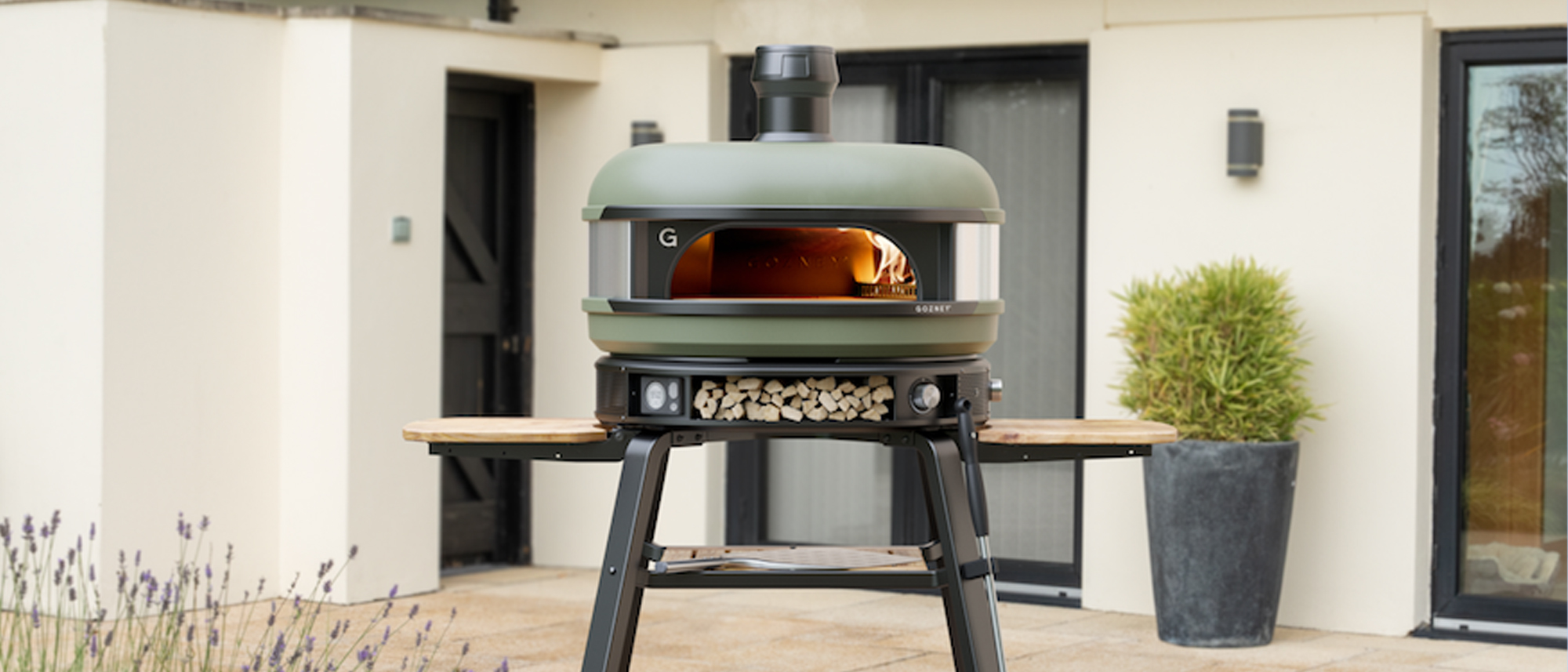Tom's Guide Verdict
The dual-fuel Gozney Dome looks amazing and makes great pizzas, but is expensive.
Pros
- +
Can cook with wood or gas
- +
Built to commercial specifications
- +
Reaches high temperatures quickly and maintains them
- +
Highly versatile
- +
Modern design and thoughtful functionality
Cons
- -
Much more expensive than other outdoor pizza ovens
- -
Not portable
Why you can trust Tom's Guide
Weight: 128 pounds
Fuel: Propane/wood
Cooking surface: 21.7 x 18.5 inches
If you already make one of the best pizza ovens, how are you going to stand out with yet a new model? If you’re Gozney, the company behind the popular Gozney Roccbox, the answer is the Gozney Dome, a supersized model that bills itself as a versatile outdoor oven for cooking more than just pizzas.
The Dome promises to reach temperatures of 950 degrees Fahrenheit, and its larger design and dual-fuel capabilities allow it to also cook more than just ‘za. But, at a starting price of $1,499, it’s more than twice as expensive as some other top models. We put the Gozney Dome to the test to see how it stacked up and whether it’s worth shelling out the dough for this high-tech outdoor oven.
Gozney Dome review: Price and availability
Unlike some smaller outdoor pizza oven models, which run in the $500 to $700 range (the Gozney Roccbox is just $499), the Gozney Dome is a much larger piece of equipment, and therefore will set you back $1,799 for the dual fuel option, or $1,499 for a version that only runs on wood. The oven is currently available only on Gozney’s website and at select local retailers. We also recommend buying a pizza peel to slide pies in and out of the oven with ease, which Gozney sells separately for $99.
Gozney Dome review: Ease of setup
The Gozney Dome is a large oven, clocking in at 128 pounds (while the entire shipping package is 150 pounds). It’s worth noting that the box the oven comes in is rather large and heavy to move. All that’s initially required is removing it from the box — which, given its size and weight, Gozney strongly recommends that two people do, and we would wholeheartedly agree — and setting it on a safe surface in a well-ventilated area.
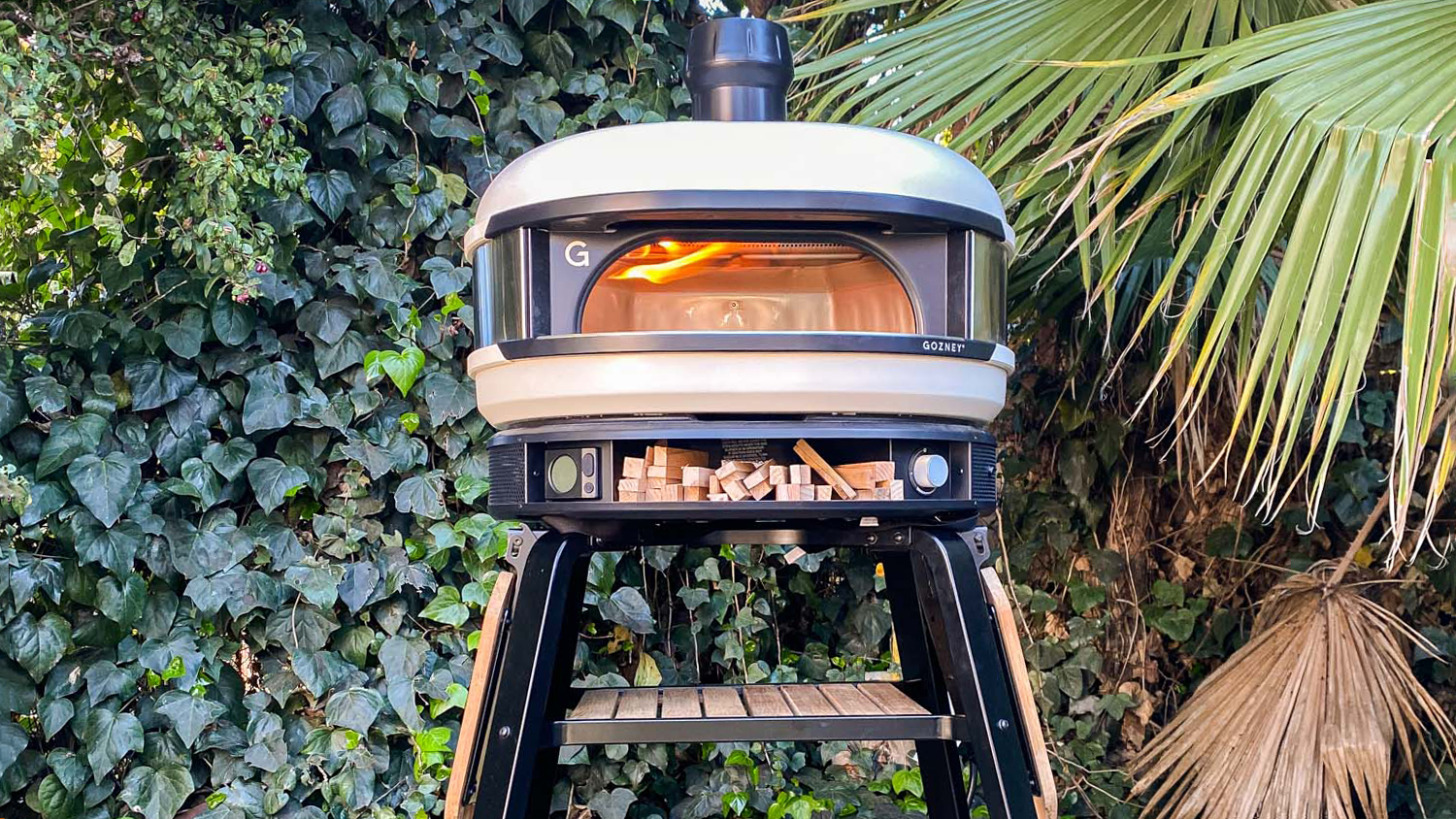
Once the oven has been removed from the box, there are only a few simple steps to get it set up, seeing as the cordierite stone plates are already inside the oven. The flute on the top of the oven has to be assembled, a steam plug is inserted into the Dome, and an ashtray is inserted into the oven. Lastly, batteries are placed into a digital thermometer, and the thermometer is installed into the front of the oven. Overall, these steps were easy to follow and took about 15 minutes, total. To begin cooking with gas, all we had to do was simply attach the gas feed to a propane tank and turn on the oven.
A specially designed steel-and-bamboo stand for the Dome is sold separately for $299. Unlike the oven itself, the stand requires several steps for set-up and during our experience, took a few hours and proved to be quite complicated. Our recommendation is for two people to set up the stand, so that one person can hold certain pieces while the other screws them together, which proved to be a challenging endeavor. Overall, though, we highly recommend the stand for those who don’t have a proper spot to place the oven, as the foldout shelves are quite functional and it’s a well-designed, attractive piece that pairs well with the oven.
Gozney Dome review: Design and functionality
The Dome was designed over a period of three years to meet commercial specifications while being easy for home cooks to use. The exterior of the oven is made of ceramic-coated steel (currently only available in one color, the off-white Bone) that’s both water resistant and UV safe, and stays relatively cool to the touch. The interior, meanwhile, features a super thick cordierite stone floor to retain heat. In its base, the Dome also has a six inch-high storage area for placing kiln-dried wood (sent by Gozney). Much like the Roccbox, the Dome has a modern, minimalist aesthetic — great for design lovers — combined with smart technical features that enhance its functionality.
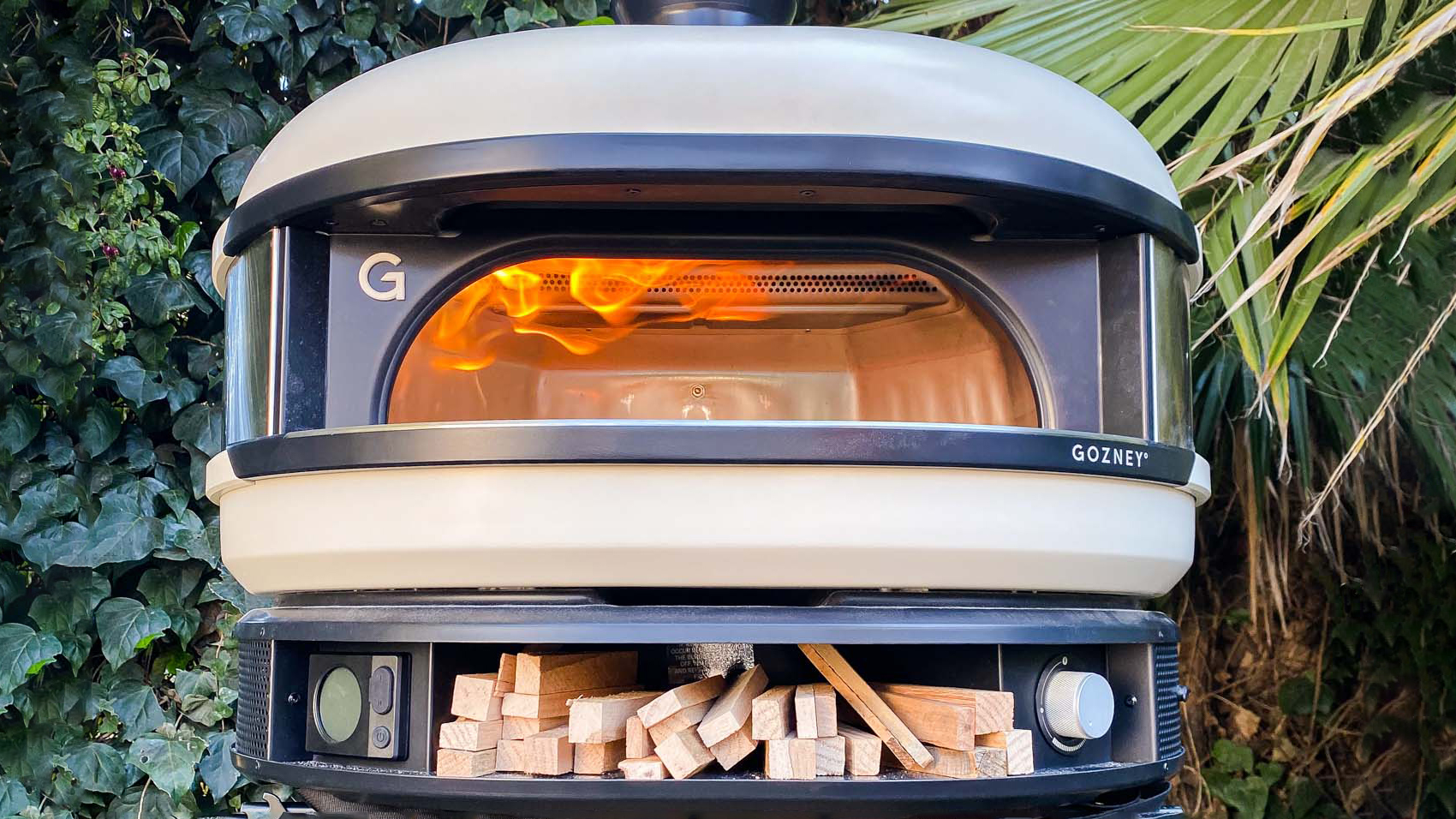
Among its chief design attributes are a wide, deep cooking surface built to the commercial specifications of a pizza oven (clocking in at 21.7 x 18.5 x 7.5 inches) that make it roomy enough for two small pizzas (although cooking one at a time is better), a 16 x 5-inch mouth that makes sliding pizzas in and out effortless, an easy-to-read digital thermometer for keeping track of the oven’s temperature, and an ashtray under the wood-buring side of the oven to collect any ashes during cooking.
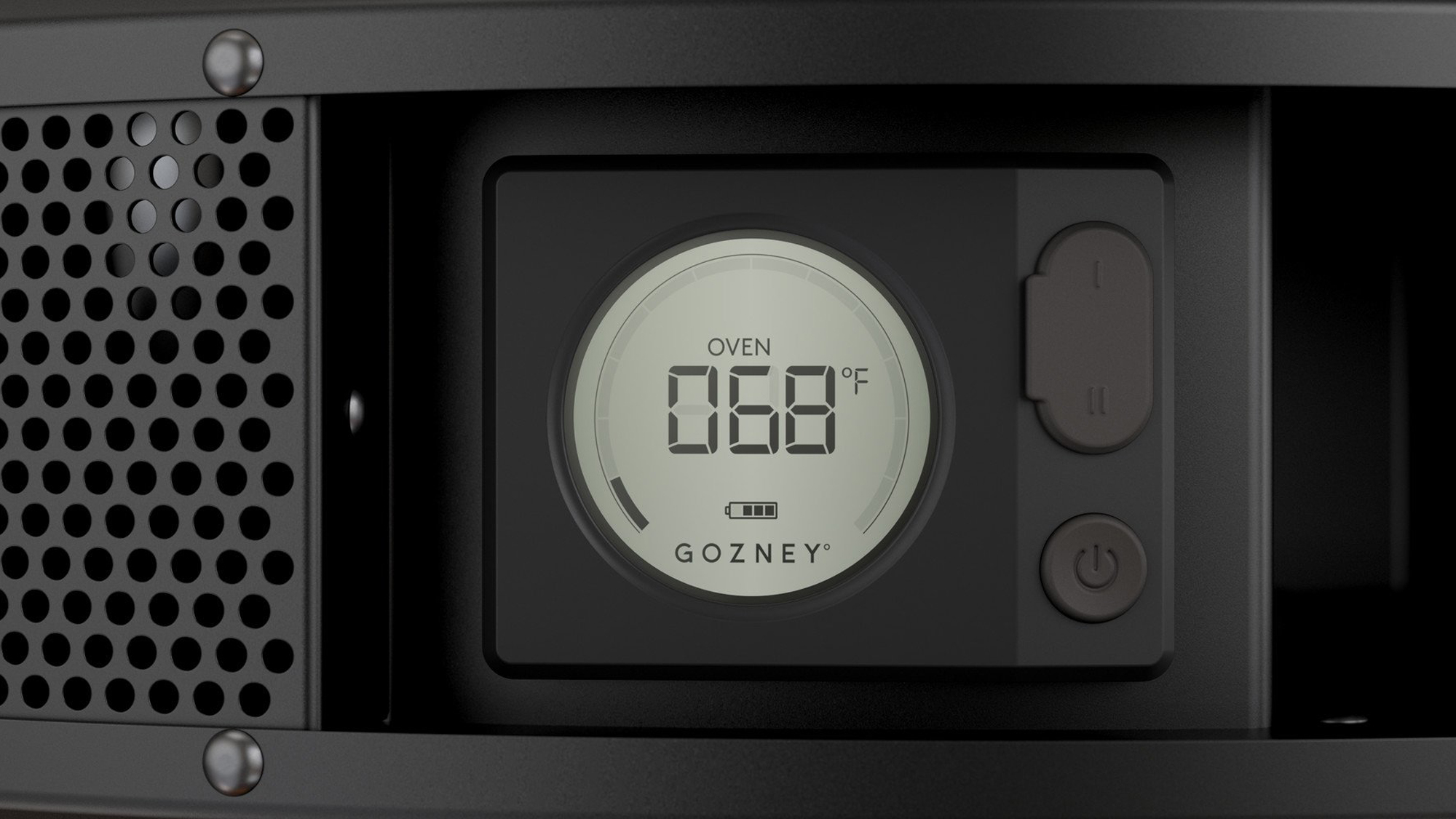
The Dome also comes with a handy weatherproof cover so you can leave it outside without worrying about water damage — although it should be noted that the oven takes several hours to cool down, so don’t apply the cover right after cooking.
Gozney Dome review: Cooking performance
As we’ve mentioned, the Gozney Dome is designed to cook with gas or with wood. When facing the oven, the gas outlet is on the lefthand side of the oven’s floor, while the wood is used with a grate on the righthand side. To change from gas to wood, the oven user must simply move a circular cordierite puck from one side to the other to plug up whichever side isn’t being used.
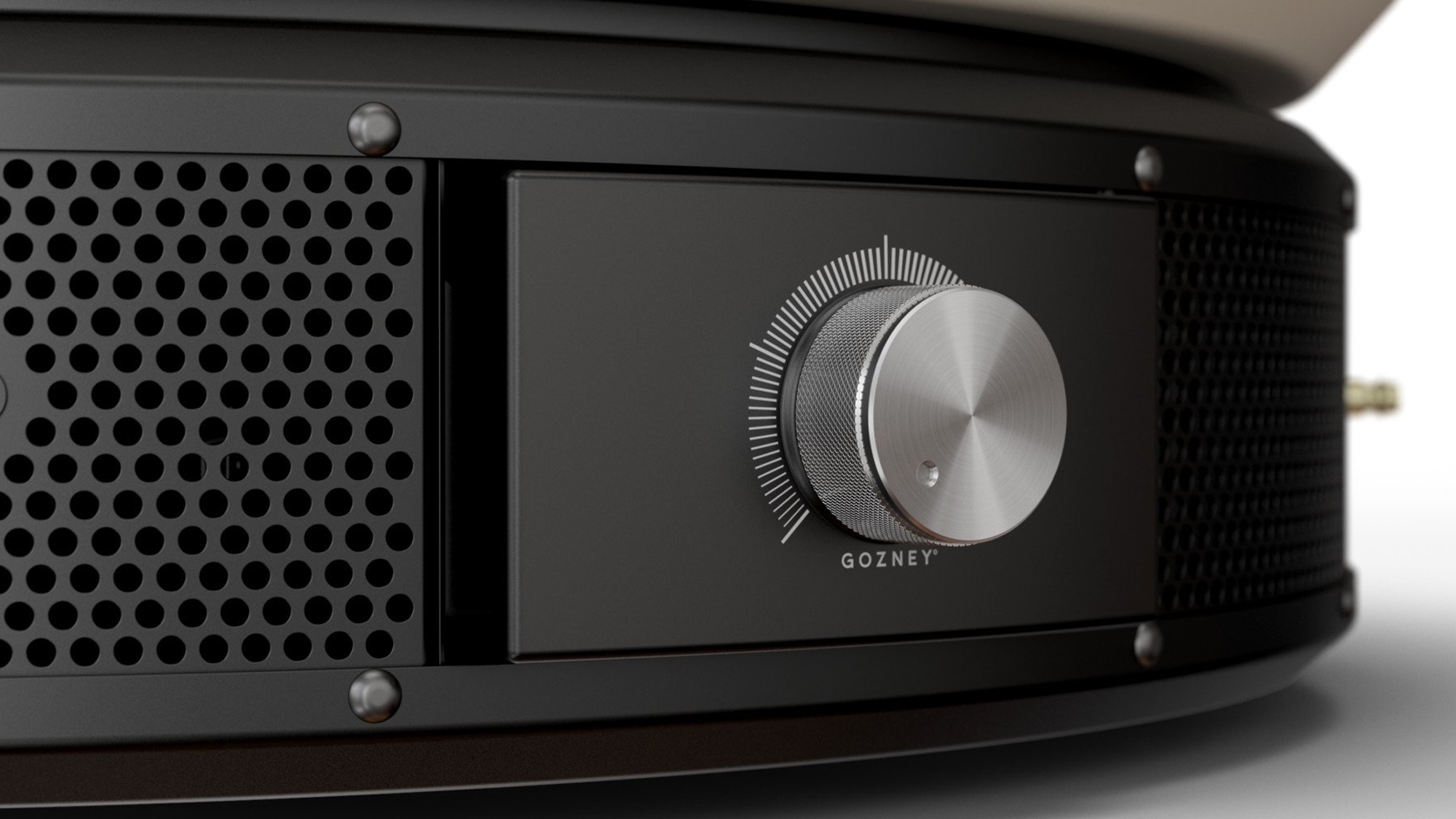
Before firing it up to cook, the company recommends “seasoning” the oven prior to the first cook, or letting it run for at least 30 minutes on low heat (which we did). Once connected to a propane tank, the oven was turned on rather easily, by simply turning the ignition switch and holding it until the flame “caught.”
On other gas firings, the oven took about 40 minutes to heat up to 750 degrees F, the ideal temperature for cooking pizza. Much like the Roccbox, the Dome features a rolling flame that licks the ceiling of the oven, and provides even heating to balance the hot stone beneath.
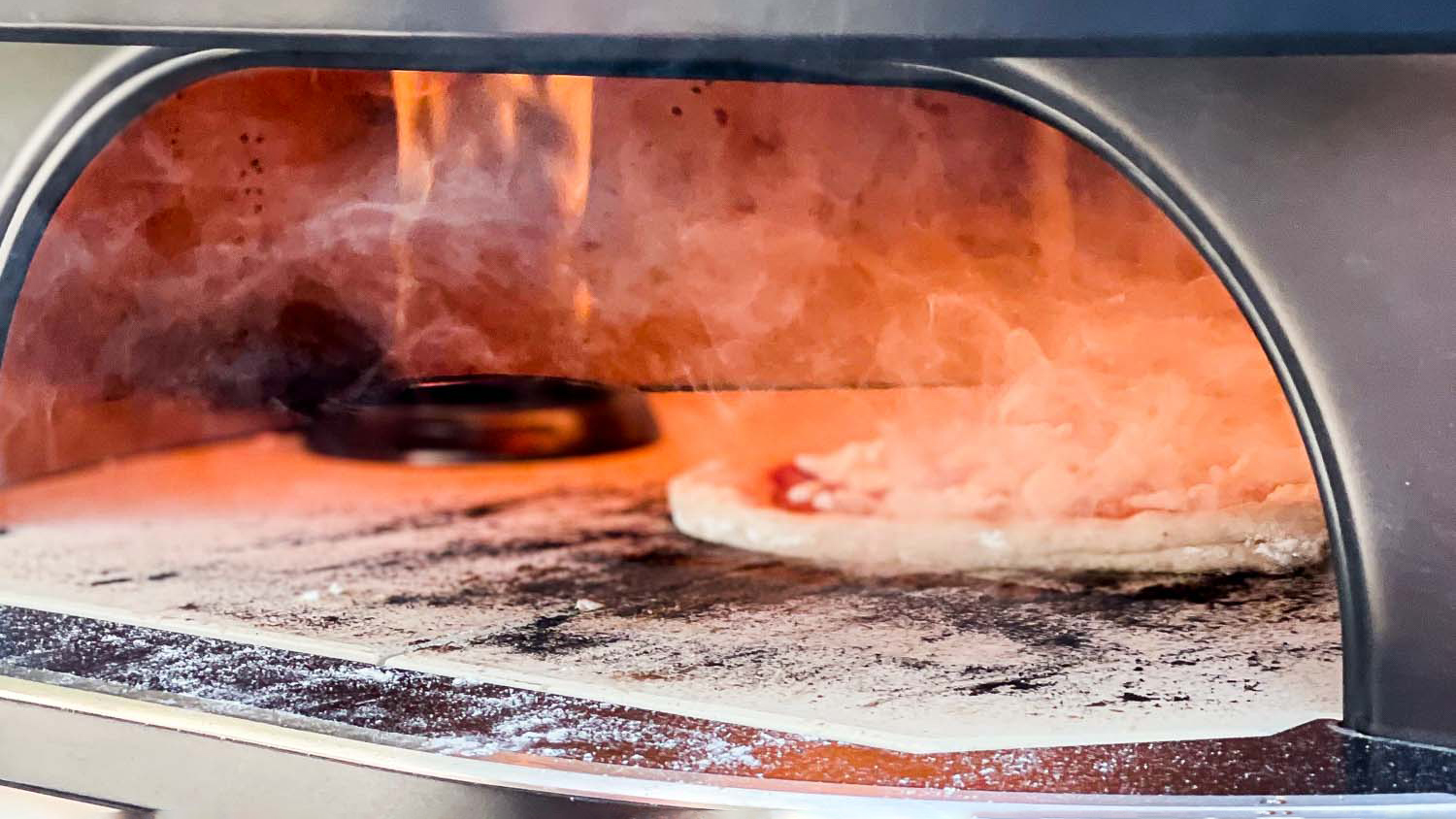
When we tested homemade Neapolitan-style dough and Neapolitan dough bought from a local pizzerias, the pies cooked in two minutes or just slightly less, with pleasant blistering (or “leoparding”) all over the crust. Store-bought dough — which we wouldn’t recommend for these types of ovens because it’s too thick and burns easily — took three to four minutes to cook. Throughout cooking, the temperature was easy to control and didn’t fall much, but it’s worth keeping an eye on the digital thermometer.
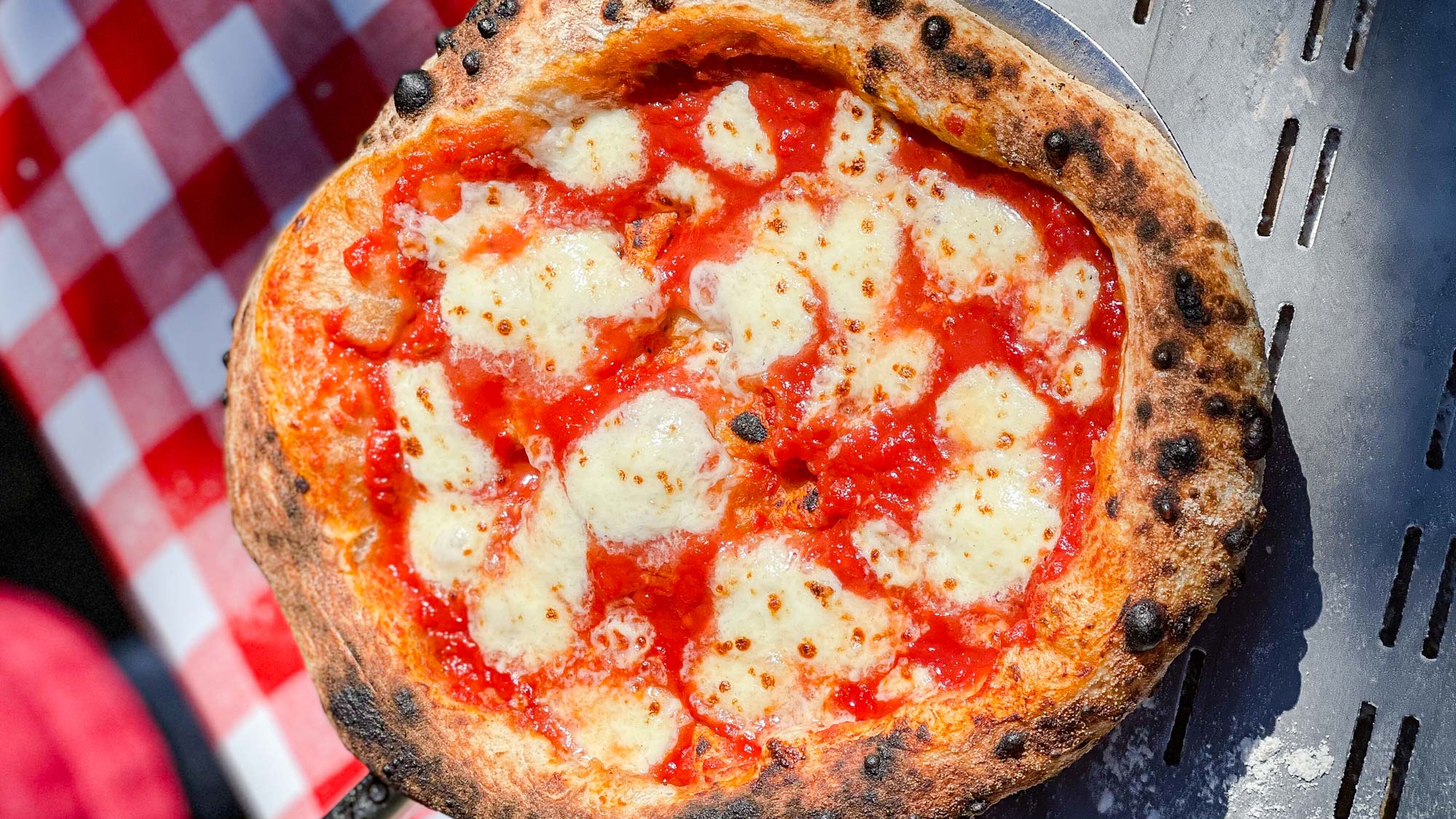
Cooking with wood proved slightly more challenging: The oven took longer to heat up, and wood required more attention during cooking (adding more, moving it around, etc.). However, once the oven reached an optimal temperature, the pizzas we tested out still cooked rather quickly, at around 3 minutes. The advantage of using wood, of course, is that the pies were imparted with a kiss of smoke and still got a beautiful level of charring on top and on the bottom. Cleaning up the ash was relatively easy; it simply has to be swept over to the side of the oven with the ashtray (although we’d also recommend sweeping out ash occasionally during cooking).

In order to get the best of both worlds, we would recommend heating the oven with gas and then switching to wood by moving the puck carefully with tongs — so that the oven gets going more quickly, but you still get that wood-fired taste and fragrance.
Gozney Dome review: Verdict
The Gozney Dome is a thoughtful, well-designed, powerful outdoor oven. Although it may not be suitable for those with limited outdoor space or people who want to take their pizza-making adventures on the road (who may want to go with the lighter, more portable — and far less expensive — Roccbox or Ooni Koda 16), it’s an easy-to-use, highly versatile oven that can be used for much more than pizzas. Its larger mouth and cooking area give it an edge over the Roccbox and Ooni Koda as well, making it easier to slide in cast-iron pans and the like. Overall, the Gozney Dome is a must for anyone who wants to master cooking with live fire.
Karen Palmer has been writing about food and dining for more than 15 years, covering everything from restaurants and chefs to recipes and, now, outdoor pizza ovens. Her obsession with all things pizza started when the New Jersey native lived in Milan, Italy for a few years as a child, and it continued well into adulthood. A self-described pizza connoisseur, Karen started a French bread pizza pop-up in Los Angeles called Pain Pizza. When the Boston College and culinary school grad isn’t writing about food, you’ll find her hopping a flight at LAX, taking a dance HIIT class, or enjoying a pie at one of her favorite local pizzerias.
